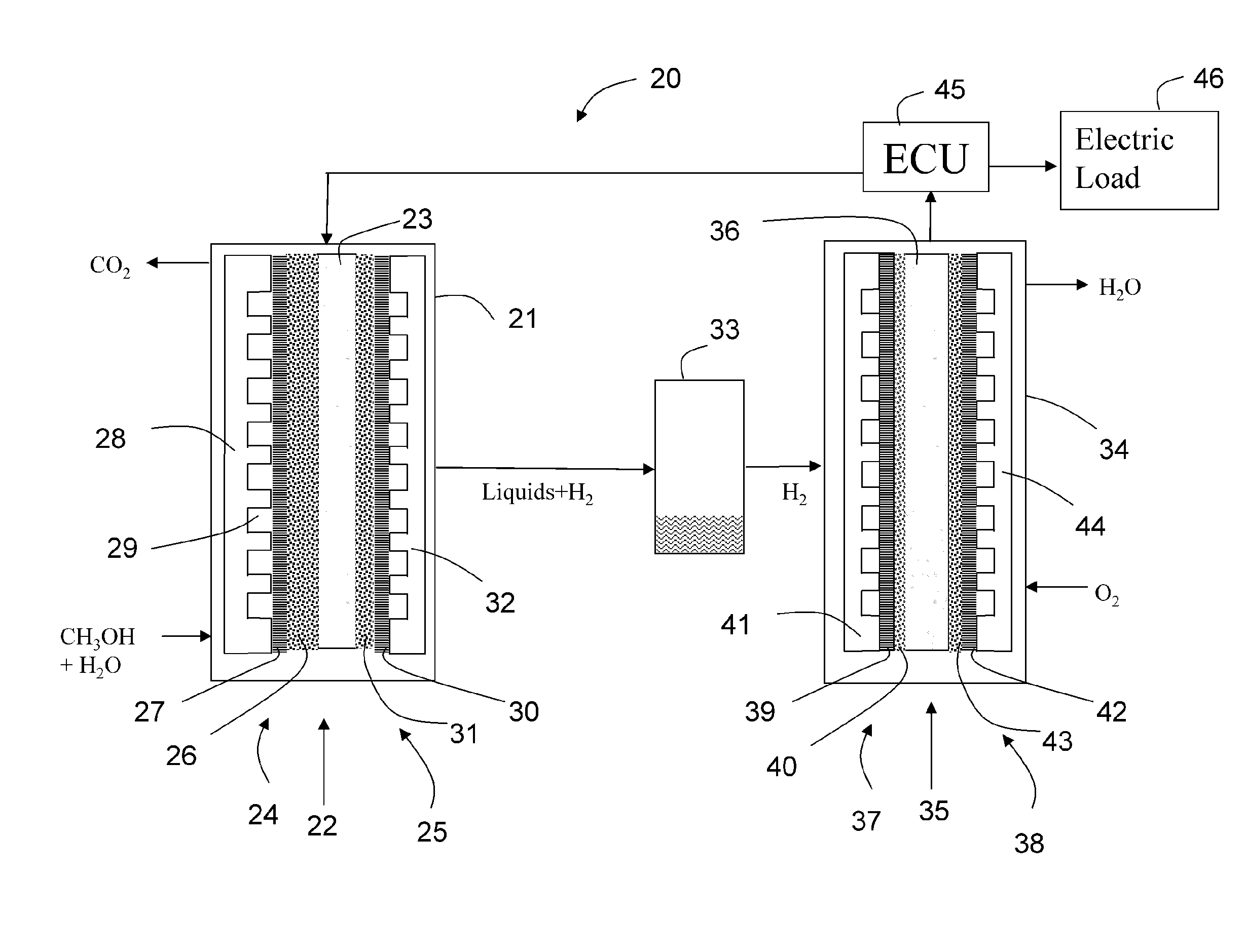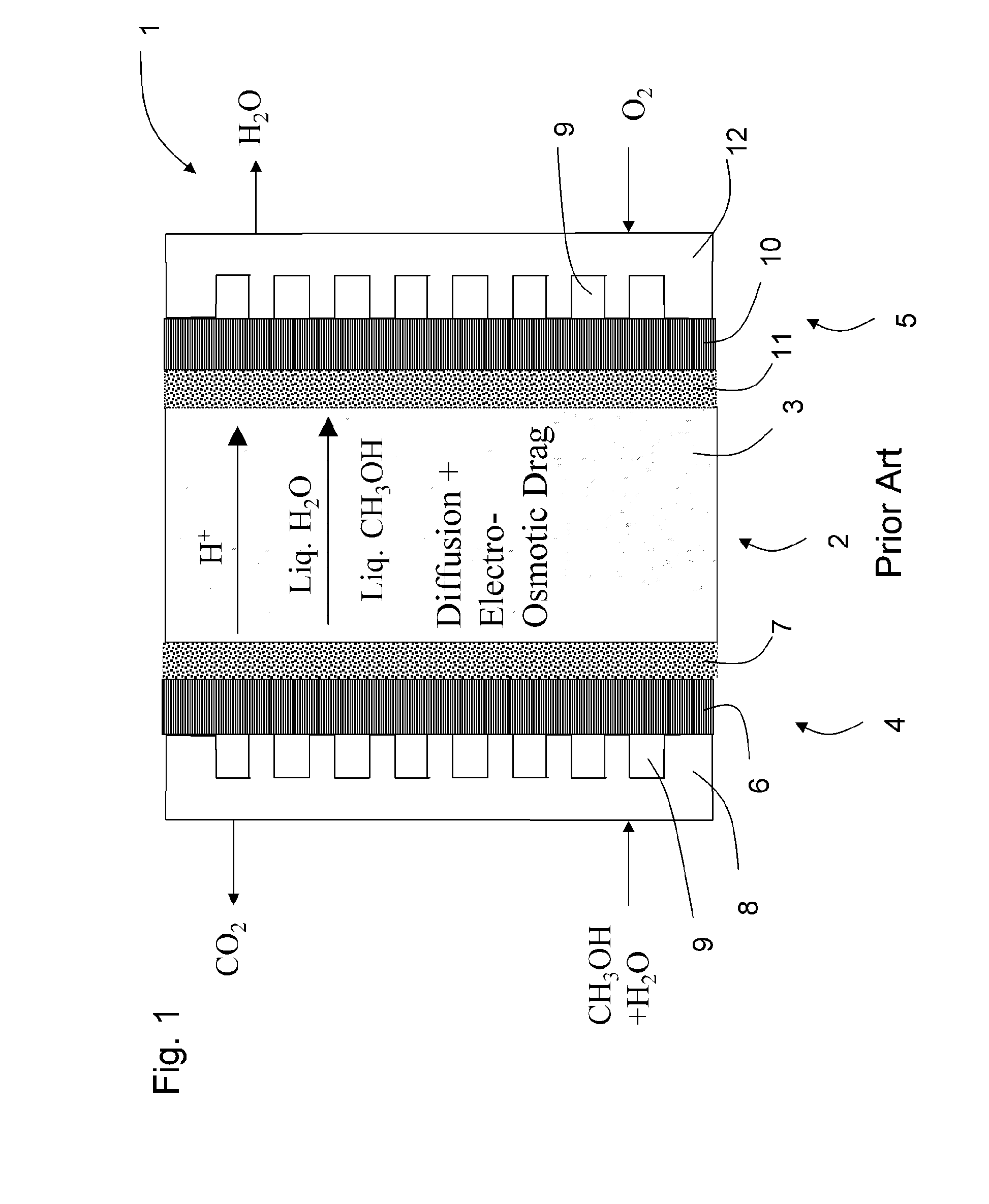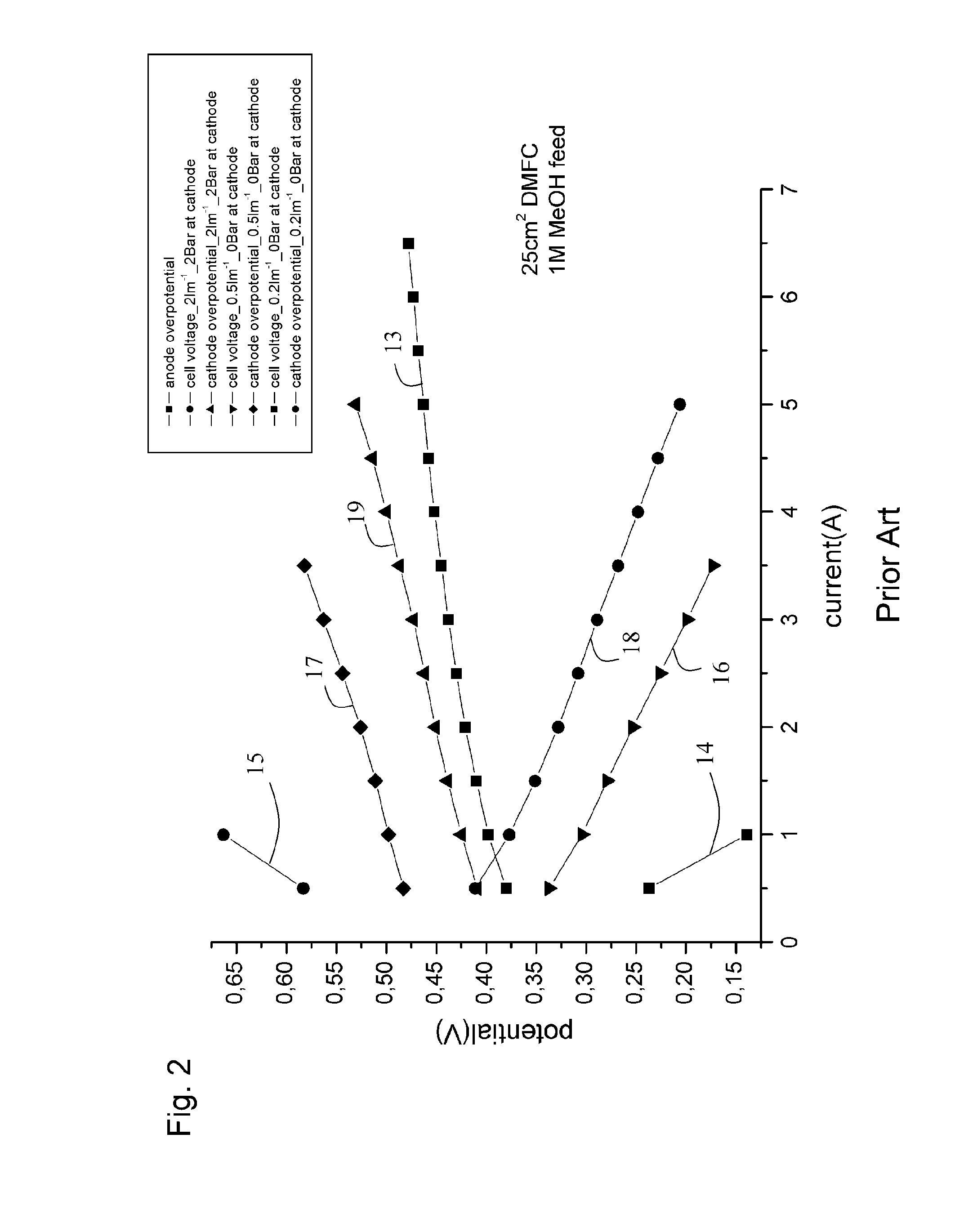System For Generating Electrical Energy Comprising An Electrochemical Reformer And A Fuel Cell
a technology of electrochemical reformer and fuel cell, which is applied in the field of system for generating electrical energy, can solve the problems of gas phase, polymer electrolyte membrane as separator, and remains under investigation in the membrane field, and achieves the effects of improving the overall energy density of the system, simplifying the complexity of the system, and high flow
- Summary
- Abstract
- Description
- Claims
- Application Information
AI Technical Summary
Benefits of technology
Problems solved by technology
Method used
Image
Examples
example 1
[0168]The performance at temperature 77° C. is calculated. The data for the performance of the DMFC are taken from the reference cited above. The electrolyzer data are taken from our measurements which are shown in FIG. 22. The 1 cm2 area of the MEA 22 of the electrolyzer 21 at 77° C. with 4.2 mg / cm2 PtRu results in a current density of 343 mA / cm2 at 0.4 V. Then H2 corresponding to this current is fed to the fuel cell 34. Taking the data from FIG. 23, a 2.3 cm2 area of the MEA 35 is required, when the fuel cell 34 operates at 0.8 V. If the fuel cell voltage is at 0.8 V a voltage amounting to 0.5 V can be applied to the external load 46. Since 1 cm2 of the MEA 22 the electrolyzer will result in a current of 343 mA and since the external load is supplied with a voltage of 0.4 V the total power supplied to the external load 46 is 137 mW.
[0169]Then the area and catalyst loading needed for same power is calculated for the DMFC. A DMFC operating at 77° C., with ambient pressure cathode, h...
PUM
| Property | Measurement | Unit |
|---|---|---|
| operational temperatures | aaaaa | aaaaa |
| operational temperatures | aaaaa | aaaaa |
| temperature | aaaaa | aaaaa |
Abstract
Description
Claims
Application Information
 Login to View More
Login to View More - R&D
- Intellectual Property
- Life Sciences
- Materials
- Tech Scout
- Unparalleled Data Quality
- Higher Quality Content
- 60% Fewer Hallucinations
Browse by: Latest US Patents, China's latest patents, Technical Efficacy Thesaurus, Application Domain, Technology Topic, Popular Technical Reports.
© 2025 PatSnap. All rights reserved.Legal|Privacy policy|Modern Slavery Act Transparency Statement|Sitemap|About US| Contact US: help@patsnap.com



